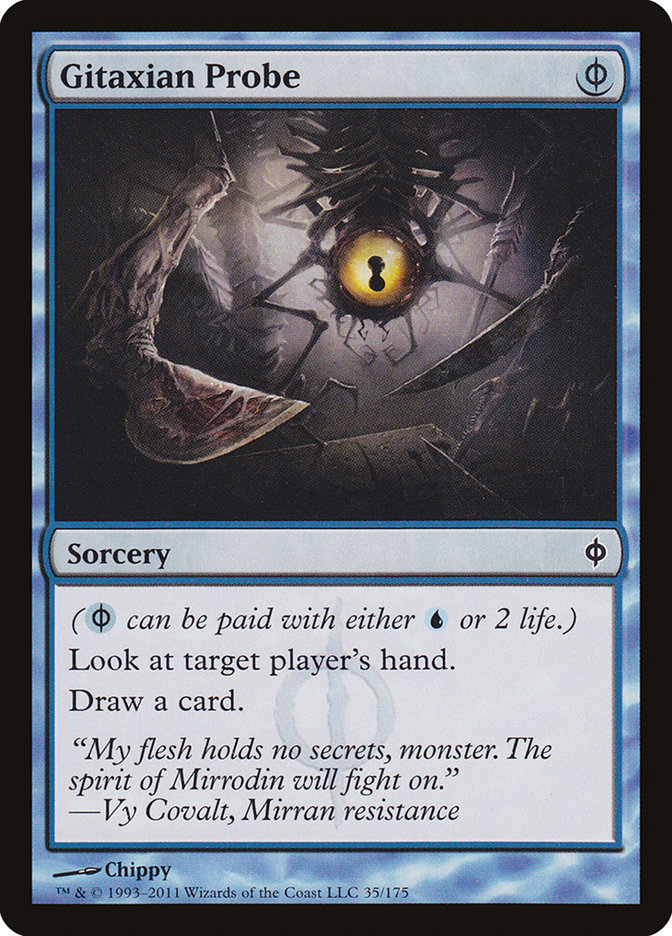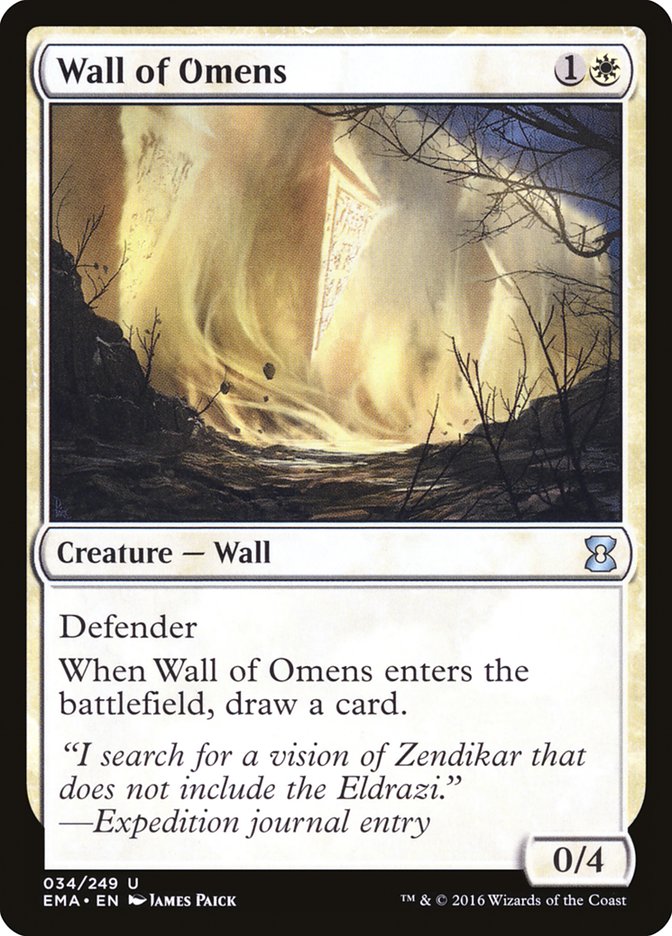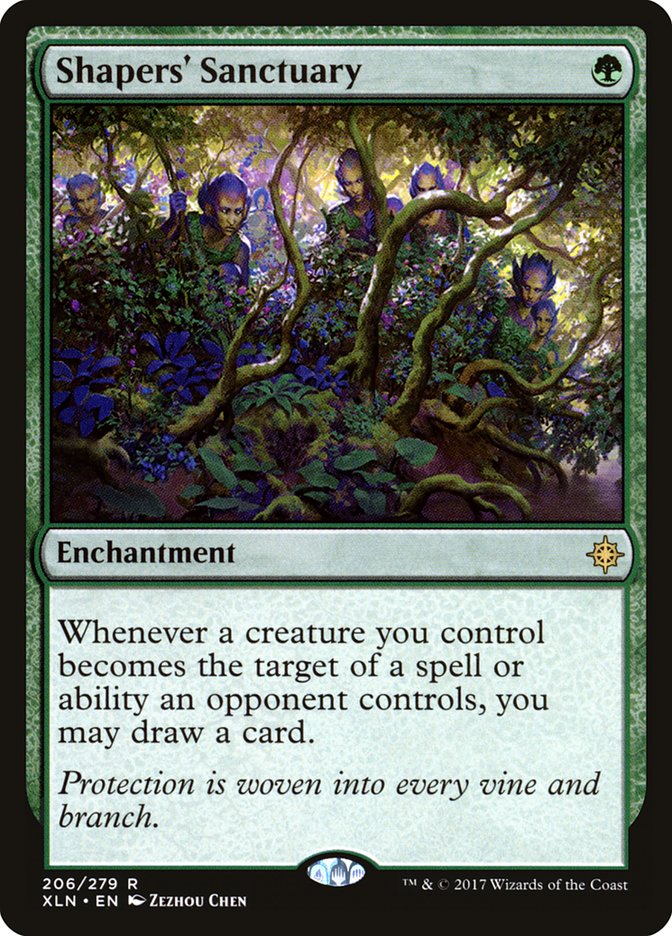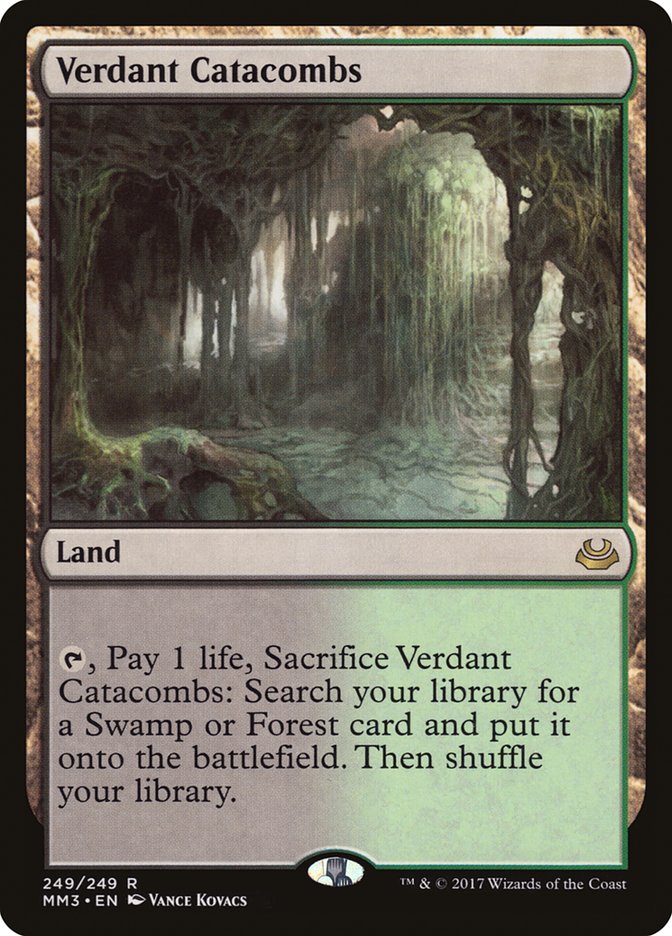Context is everything. There are dozens of adages in Magic, most of which are meant to be used as a rule of thumb, not absolute law. “Play what you know” is easily the most-used saying for Modern and Legacy, but why?
Familiarity.
Familiarity in Magic extends further than simply memorizing the text of cards in one’s own deck. Games of Modern and Legacy are complex. Familiarity encompasses the play patterns associated with decks, the roles that individual cards play, and the ways that strategies counteract other archetypes.
The importance of familiarity with one’s own strategy ends up being of such importance in Eternal formats due to the incredibly large card pool available. Jumping decks from week to week in Standard isn’t particularly difficult; there are only a half-dozen strategies that are truly distinct from one another. Modern alone has three or four dozen archetype trees that could sit down across from you at any given tournament.
The counterpoint to this relates to the given power of something, relative to the rest of the format. Remember that context I’d mentioned previously?
My Relationship with Infect
My approach to familiarity is complicated. Magic is my job, and as such I am financially obligated to do what I can to try to succeed in the tournaments I attend. It makes finding the balance between familiarity and format positioning a much higher priority than it would be otherwise. Why is this balance relevant?
I have more games with Infect under my belt than a fair chunk of players have played total games of Magic. I started playing the deck towards the end of 2013 and played it almost exclusively (with a short break for Tarmo Twin) until grinding the SCG Tour last year. It’s possible to get more familiar with a deck, but it’s difficult. Unfortunately, the banning of Gitaxian Probe and the printing of Fatal Push earlier this year made it time to put the deck down for a while.
For that while, my results suffered. Modern events this year have featured me playing a wide variety of decks with mixed success. It’s no coincidence that my only notable finishes in Modern were from the tempo-oriented Death’s Shadow and the linear U/R Gifts Storm. Outside of that, I’ve sleeved up four other decks for tournaments and been unable to cobble together results, despite the decks being “better in the format” than things I’m more familiar with. This isn’t to say that this isn’t related to my shortcomings as a Magic player; quite the opposite, actually. This is more to highlight the difference that familiarity can make when it comes to deck selection and piloting.
Infect Today
After months of feeling like Infect wasn’t a real contender and that it would just fold to the sea of Fatal Pushes and Chalice of the Voids, Zan Syed did something amazing:
Creatures (14)
Lands (20)
Spells (26)

Zan missed his win-and-in during the last round of #SCGCHAR but came so close that it was hard to avoid taking notice of the fingerprints his deck left on the decklists that were posted. Last week, I wrote about beating Gifts Storm and the other linear combo decks that were starting to show up, and this Infect list utilizes each point in the article perfectly.
Towards the end of last week I couldn’t help but wonder: if Infect was doing everything I wrote about wanting to do, why wasn’t I playing it?
Creatures (14)
Lands (20)
Spells (26)

After being hazed into playing Gifts Storm in the #SCGCIN main event after my making the Classic playoffs the week before, I bit the bullet and sleeved up my old infectious friends. Despite playing zero games with Glistener Elf in exactly a year, playing Infect was like riding a bicycle.
A Newcomer
Jace, Vryn’s Prodigy provides a new angle to the deck that hadn’t previously been explored. Older iterations of the deck featured Spellskite in this slot as a way to protect its infect creatures, or else Sylvan Scrying as a utility spell. Jace, Vryn’s Prodigy tends to be a bit weaker than its predecessors during the first game, with its real power being in the post-sideboard games.
Post-sideboard as an Infector Protector, like Spellskite, Jace tends to draw removal away from early infect creatures. It doesn’t literally have text that redirects spells, but the looming threat of a two-mana planeswalker is generally enough to make players consider the damage they can afford to take from infect creatures as a resource in order to deal with Jace immediately.
With Spellskite, players have time to find the removal necessary to deal with an early Spellskite that comes down before an infect creature. Jace, Vryn’s Prodigy is a different animal. Jace generally offers a one- to two-turn window in which the opponent can kill him. After that, he threatens to transform in response to removal or rebuy protection spells for infect creatures in response to removal spells.
In addition to his coveted role in The League of Infector Protectors, Jace serves another role that’s easy to overlook: he increases the potency of sideboard cards. It’s easy to look at the average Snapcaster Mage deck and think about the 2/1 increasing the power of sideboard cards, but this deck tends to err towards the unfair side of things, and the grinding aspect of Magic isn’t frequently considered when evaluating card selections in the deck.
The flashing back of sideboard cards tend to be one of the most attractive aspects of Jace, Vryn’s Prodigy, for reasons related a bit to sideboard deck construction theory. The more linear a deck is, the more powerful the cards in its sideboard tend to be. The driving force behind this is that linear decks can only afford to sideboard so many cards, lest they run the risk of diluting their strategy, and as a result tend to have the most impactful cards to bring in. More powerful cards being added to the deck, in turn, increases the power of Jace, Vryn’s Prodigy’s Flashback ability.
Figuring all of this out on the fly wasn’t remotely difficult-, in part because of where the card was in the deck. It was replacing a card that I understood the role of (Spellskite), and this recognition provided a sort of bearing as a result.
Playing Against “New” Decks
Feeling comfortable piloting a deck may fit the bicycle aphorism mentioned previously, but that’s only half of the equation. What about the terrain? In other words, there’s an opponent there as well. A lot can change in a year, and it’s almost impossible to instantly adapt an archetype…or is it?
The specifics cards and intricacies in decklists may change over time, but many of the basic play patterns associated with popular shells evolve glacially. Eldrazi Tron and U/W Gideon Tribal didn’t exist during my last foray with Inkmoth Nexus. That doesn’t mean I didn’t know how to play against Chalice of the Void and Wall of Omens. A large chunk of proficiency is learning the play patterns associated with all of the cards that might fit under a specific umbrella.
Learning to play against new decks isn’t nearly as hard with something that you’re already proficient with because you’re only learning from one side of the table at a time. Searching for a way to get around new cards in the form of Walking Ballista and Gideon of the Trials is made much easier when that’s the only task at hand.
Putting Down Ol’ Faithful
So when is it time to move on? Where’s the point that one is supposed to leave their favorite bike in the garage? To play on this example: we leave our favorite bike at home when the weather isn’t right for bike-riding.
As alluded to earlier, Gitaxian Probe made Infect weaker, and that was a strike against it. Death’s Shadow becoming popular (largely in part due to the printing of Fatal Push) was a strike against it. Removal-heavy Snapcaster decks and Lingering Souls seeing spikes in popularity were both strikes against it.
Having one’s win rate padded with proficiency-fueled percentage points only goes so far. There comes a time when one has to acknowledge that Magic can be a game of rock-paper-scissors, and it’s foolish to continuously bring paper to the scissors fight.
The next step is finding a new deck to play. There are several different ways to approach it, but for my neighbors in Spike-land, it’s a bit easier: find an existing deck that plays similarly.
My natural gravitation towards Death’s Shadow decks is no coincidence. At their core, Death’s Shadow variants are generally “Protect the Queen”-styled decks that try to leverage their single threat in a way that is difficult for most to interact with. Stop me if you’ve heard this song before…
Creatures (12)
Lands (21)
Spells (27)

Creatures (13)
Lands (16)
Spells (31)

Switching to something new isn’t always going to involve starting at square one. When playing to one’s strengths, it’s going to feel like riding a new ten-speed. The balance is a bit different, and accelerating takes some getting used to, but at the end of the day it’s still a bicycle.
Look at what your deck is doing, not the cards it is using. Think of the play patterns and situations it promotes. Then, boil down how today’s successful deck’s operate and why it is they’re succeeding over your favorite flavor. Collins Mullen’s take on Humans swept #SCGCIN last weekend despite being slightly different from previous iterations we’d seen:
Creatures (36)
- 4 Meddling Mage
- 4 Noble Hierarch
- 4 Champion of the Parish
- 3 Mayor of Avabruck
- 4 Thalia, Guardian of Thraben
- 4 Mantis Rider
- 3 Reflector Mage
- 4 Thalia's Lieutenant
- 2 Thalia, Heretic Cathar
- 4 Kitesail Freebooter
Lands (20)
Spells (4)

What makes this version of the deck better than its Collected Company-fueled predecessors?
Creatures (32)
- 1 Aven Mindcensor
- 4 Noble Hierarch
- 4 Champion of the Parish
- 4 Avacyn's Pilgrim
- 2 Mayor of Avabruck
- 4 Thalia, Guardian of Thraben
- 3 Sin Collector
- 1 Anafenza, the Foremost
- 1 Abzan Falconer
- 4 Reflector Mage
- 4 Thalia's Lieutenant
Lands (20)
Spells (8)

Despite both of these decks being go-wide/”Little Kid” creature decks, Collins made a very conscious decision to stick with Aether Vials and zero (!!) spells in his 75.
The short answer is that it was in response to the surge of linear decks and combo that was entering the format. Meddling Mages and Kitesail Freebooters were all of the interaction the deck needed to knock the spell-based decks off-balance, and everything else was zeroed in on killing the opponent. There’s no interest in netting cards off Collected Company or getting creatures out of the way.
Collins is no stranger to decks that vomit a sea of 2/2s and 3/3s onto the table, either:
Creatures (29)
- 4 Golgari Grave-Troll
- 4 Stinkweed Imp
- 4 Simian Spirit Guide
- 4 Narcomoeba
- 1 Scourge Devil
- 4 Bloodghast
- 4 Prized Amalgam
- 4 Insolent Neonate
Lands (18)
Spells (13)

Rather than try to force a deck that’s been pushed out by Gifts Storm and the surge of graveyard hate people are using to combat it, Collins adapted.
Getting a New Bike
There isn’t a specific roadmap to the bike that’s the best for everybody. Sure, content producers will tell you what the best deck in a format is and what may be the single most well-positioned deck on the weekend, but it won’t necessarily be the best thing for every single player.
People talk about things being in and out of their wheelhouse, and it begs the question: what’s in yours?
Bonus Decklist!
I’ve received a large number of questions about the Infect list I piloted last weekend, and to answer several of them at once:
- Windswept Heath and Verdant Catacombs are the best fetchlands at the moment. Either of those into basic Forest into Noble Hierarch conceals the most information.
- I didn’t draw Shapers’ Sanctuary all day.
- Yes, I think the deck is truly viable. It has a great combo matchup and beats up on fair creature decks.
If I were to play a tournament tomorrow, I’d register this:
Creatures (14)
Lands (20)
Spells (26)









